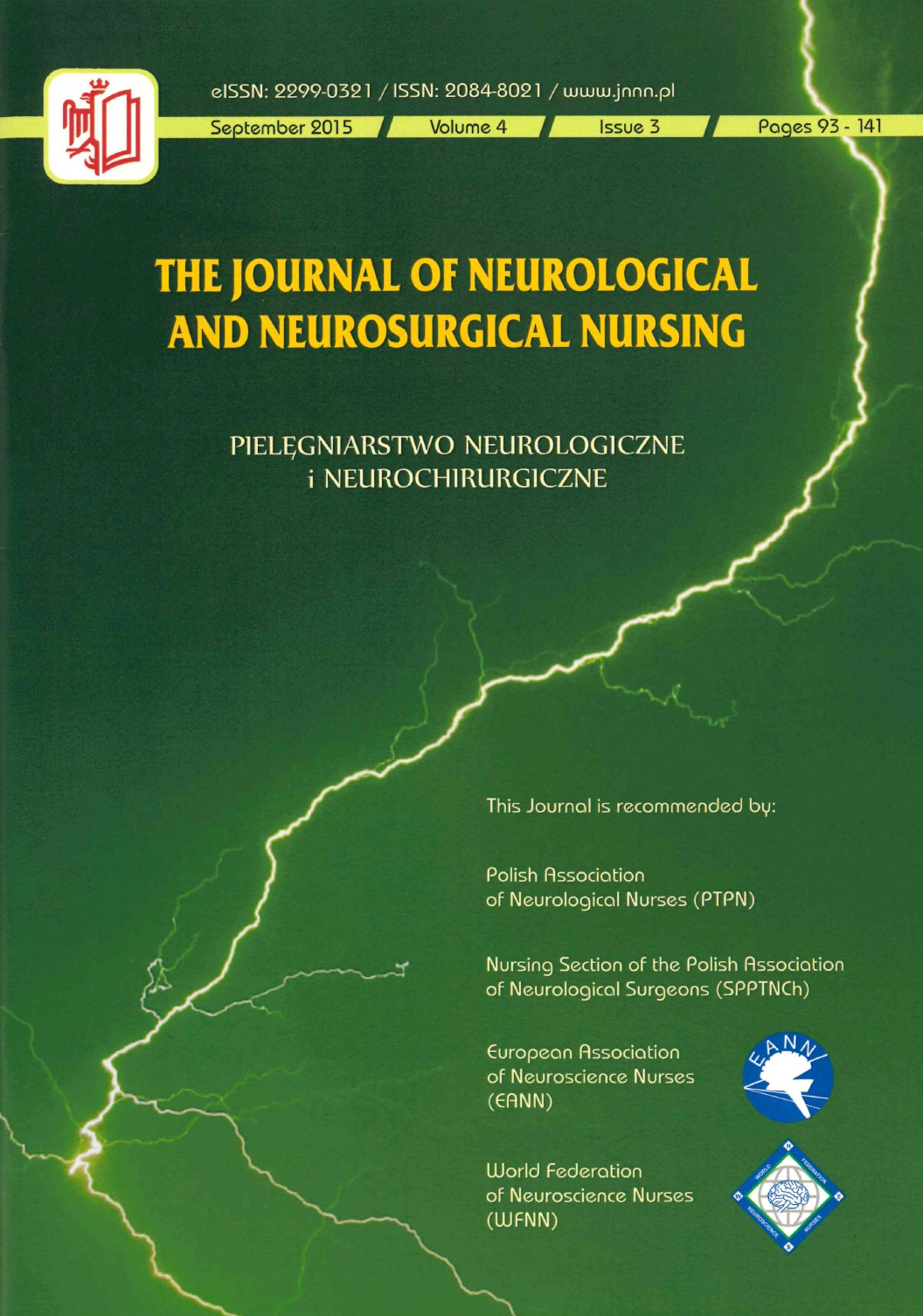The Application of Callista Roy Adaptation Model in the Care of Patients with Multiple Sclerosis – Case Report
DOI:
https://doi.org/10.15225/PNN.2015.4.3.5Keywords
multiple sclerosis, nursing process, Callista Roy adaptation modelAbstract
Introduction. Multiple sclerosis (Sclerosis Multiplex — MS) is a chronic disease of the central nervous system characterized by inflammation and the loss of myelin sheath surrounding the axon. A result of disseminated demyelination process in patients suffering from MS, is a wide variety of symptoms that lead to changes in terms of functioning both in biological and psychosocial aspects. The skilful preparation of a patient to find the optimal way of dealing with the disease, as well as maintaining independence and joy of life is an essential part of the therapeutic process in patients with MS.
Aim. The aim of this study was to use the Callista Roy adaptation model in the care of a patient suffering from multiple sclerosis, namely:
— demonstrate the usefulness of the holistic Callista Roy adaptation model in the care of chronically ill patients,
— prepare a patient to cope with the problems induced by the disease, based on the nursing process developed in line ith the guidlines of C. Roy model.
Case Report. A case study of a 69 year old patient with multiple sclerosis (SM) was prepared on the basis of medical documentation (personal information forms from hospitals), an interview with the patient and direct observations.
Discussion. The nursing care model based on the theory by Callista Roy proved to be very useful in the process of taking care of a patient chronically ill with SM, as it guaranteed satisfying the needs of a patient in terms of bio-psychosocial aspect, but it also gave the opportunity to acquire skills to cope with problems resulting from the disease.
Conclusions. The nursing process based on the theory by Callista Roy requires from a nurse an individual and holistic approach to a patient and patient’s problems. The model structure provides a comprehensive delivery of nursing care and ensures continuous contact with a patient. This is particularly important in the era of technology development in modern medicine.
(JNNN 2015;4(3):121–129)
References
Compston A., Coles A. Multiple sclerosis. Lancet. 2008;(372):1502-1517.
Ministerstwo Zdrowia. Narodowy Program Leczenia Chorych ze Stwardnieniem Rozsianym na lata 2006 – 2008.
World Health Organization. Atlas multiple sclerosis resources in the world 2008. Geneva, WHO Press.
Phillips K.D. Sister Callista Roy. Adaptation model. In Alligood M., Tomey A. (Eds.), Nursing theorists and their work (7th ed), Maryland Heights, MO: Mosby Elsevier 2010:335-365.
Clark P.N., Barone S.H., Hanna D., Senesac P.M. Roy’s adaptation model. Nursing Science Quarterly. 2011;24(4):337-344.
Roy C. The Roy adaptation model. (3 rd ed). Upper Saddle River, NJ: Prentice Hall Health 2009.
Kłos E. Patient care process model of MS by Roy Calista. Nursing of the XXI Century. 2012;2(39):11-14.
Afrasiabifar A., Karimi Z., Hassani P. Roy’s Adaptation Model-Based Patient Education for Promoting
the Adaptation of Hemodialysis Patients. Iran Red Crescent Med J. 2013;15(7):566-572.
Bakan G., Akyol A.D. Theory-guided interventions for adaptation to heart failure. Journal of Advanced
Nursing. 2008;61(6):596–608.
Akyil R.Ç., Ergüney S. Roy’s adaptation model-guided education for adaptation to chronic
obstructive pulmonary disease. Journal of Advanced Nursing. 2013;69(5):1063-1075.
Quinn Griffin M.T. Roy Adaptation Model. In Fitzpatrick J.J., Kazer M.W. (Eds.), Encyclopedia
of Nursing Research (3 rd ed.) New York: Springer Publishing Company, 2012:452-454.
Downloads
Published
How to Cite
Issue
Section
License

This work is licensed under a Creative Commons Attribution-NoDerivatives 4.0 International License.
Stats
Number of views and downloads: 1126
Number of citations: 0
